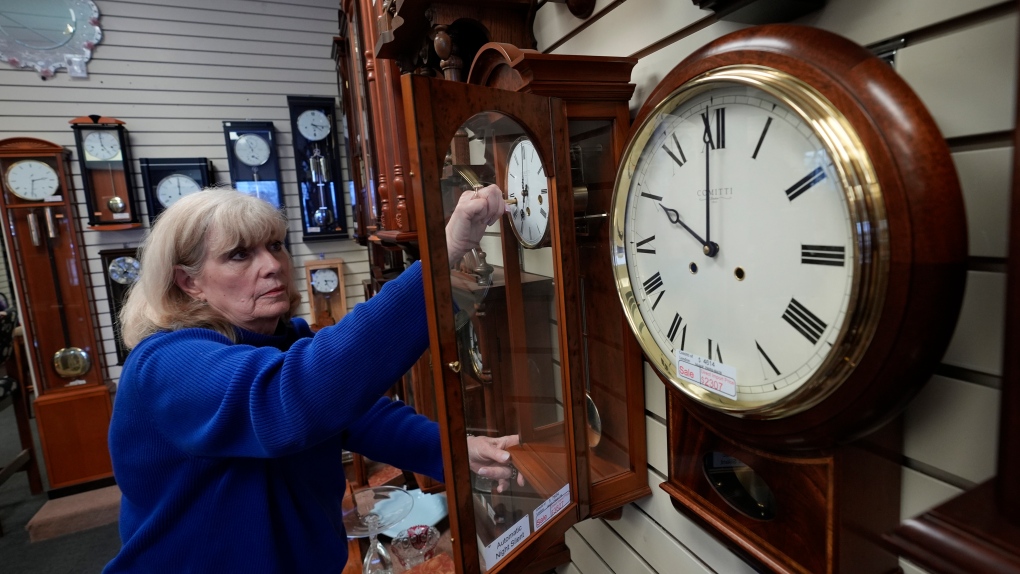
Why are clocks set forward in the spring? Thank wars, confusion and a hunger for sunlight
CTV
Once again, most Americans will set their clocks forward by one hour this weekend, losing perhaps a bit of sleep but gaining more glorious sunlight in the evenings as the days warm into summer.
Once again, most Americans will set their clocks forward by one hour this weekend, losing perhaps a bit of sleep but gaining more glorious sunlight in the evenings as the days warm into summer.
Where did this all come from, though?
How we came to move the clock forward in the spring, and then push it back in the fall, is a tale of that spans over more than a century -- one that's driven by two world wars, mass confusion at times and a human desire to bask in the sun for a long as possible.
There's been plenty of debate over the practice, but about 70 countries -- about 40% of those across the globe -- currently use what Americans call daylight saving time.
While springing the clocks forward "kind of jolts our system," the extra daylight gets people outdoors, exercising and having fun, says Anne Buckle, web editor at timeanddate.com, which features information on time, time zones and astronomy.
"The really, really awesome advantage is the bright evenings, right?" she says. "It is actually having hours of daylight after you come home from work to spend time with your family or activities. And that is wonderful."
Here are some things to know so you'll be conversant about the practice of humans changing time:





















 Run 3 Space | Play Space Running Game
Run 3 Space | Play Space Running Game Traffic Jam 3D | Online Racing Game
Traffic Jam 3D | Online Racing Game Duck Hunt | Play Old Classic Game
Duck Hunt | Play Old Classic Game